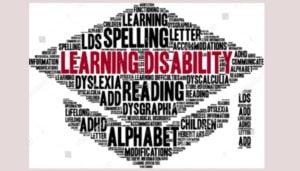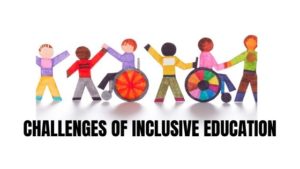The educational provisions for children with a learning disability will help such children to improve and sometimes overcome their learning disability to a certain extent. First of all the child should be identified on whether he/she has a specific learning disability and the type of lemming disability the child has, needs to be defined.
Identification of Learning Disabled Children
Identification of the learning Disabled children may be done namely in two ways.
- Employing Non-testing Devices: In non-testing devices, we may include techniques like observation, interview, rating scale, check-list, etc. (Informal Assessment)
- Employing Testing Devices: In testing devices, we may include standardizing diagnostic test, ability tests, achievement tests, daily assessment system etc. (Formal Assessment)
The Educational Provisions for Children with Learning Disability
In general educational provisions for Children with Learning Disabled include the following:
- Provisions of Specialized schools or Classes: Learning Disabled children cannot be taught along with other students as they suffer from severe learning deficiencies. Hence, there should be special schools or at least separate classes for them where they can be taught by through special methods on the same curriculum with greater care and attention.
- Provision of Special Remedial and Educational Program: Here, first the learning difficulty is identified i.e. the type and amount of it. Accordingly, a special remedial and educational program may be then adapted to rectify it. E.g. if the deficiency of the child is related to the neural disorder. We can follow remedial programs. Getman’s Visuo-Motor program etc. or if their deficiency is related to psycho-linguistic ability, we can follow a program like Witmer’s Psycho-Educational etc
- Improving the Existing Environmental Set-Up: Many of the learning difficulties of children are caused by the improper negative factors present in their physical, social and educational environment. The measures expected from the parents, members of the family, teachers, school authorities and society to improve the existing environmental set-up can be summarized as follows:
- Great care should be taken by the parents and teachers to pick-up proper methods of learning and Communication
- Efforts should be made to provide proper facilities in the school according to the needs, interest and abilities of these children. Stress should be made both on theory as well as on the practical field
- In case of severe learning disability, the child should be placed in a fulltime special learning setting under the guidance of specially trained teachers.
- The teachers should not lose patience as these children are essentially slow-learners and under-achievers. They should be accepted with all their weaknesses and deficiencies.
- With the help of men and material resources available, the learning disabled should be helped in overcoming their deficits in skills like memory, spelling, handwriting, verbal expressions and mathematical abilities etc
Specialized Approaches or Techniques for Helping the Children with Learning Disability:
Several specific techniques have been evolved through research while working with Learning Disabled Children. They are:
- Behavioural Approach: In this approach, attempts are made to modify the behaviour of the Learning Disabled by reorganizing the environmental conditions, providing opportunities for modifications In behaviour and properly re-imposing their change behaviour.
- Psychoanalytical Approach: In this approach, attempts are made to find out the root cause of this learning deficiency. Accordingly, a remedial program is planned.
- Individualized Instructional Approach: This approach advocates the use of small groups or even individuals for helping them rectify their learning deficiencies.
- Self-instructional Approach: In this approach, Learning, Disable children are required to adopt self-learning and self-improvement measures for treating their learning deficiencies. For this purpose, remedial programs like computer-assisted Instruction, Teaching Machines, Instructional CDs, Tape recorder etc can be used.
- Multisensory Approach: In this approach, Learning Disabled children are taught by appealing to their multiple senses, visual, auditory, touch, smell and taste etc.
- Technological Approach: Advanced technology is used for providing remedial programs for the Learning Disabled. Some example is video- disc instructions, computer-assisted instruction, Audiotape and tape recorder-etc.
References:
- Imti, I. (2020). 1. IJFM – Learning Disabilities in Children _1 | Learning Disability | Attention Deficit Hyperactivity Disorder. Retrieved 7 April 2020, from https://www.scribd.com/document/384882374/1-IJFM-Learning-Disabilites-in-Children-1


